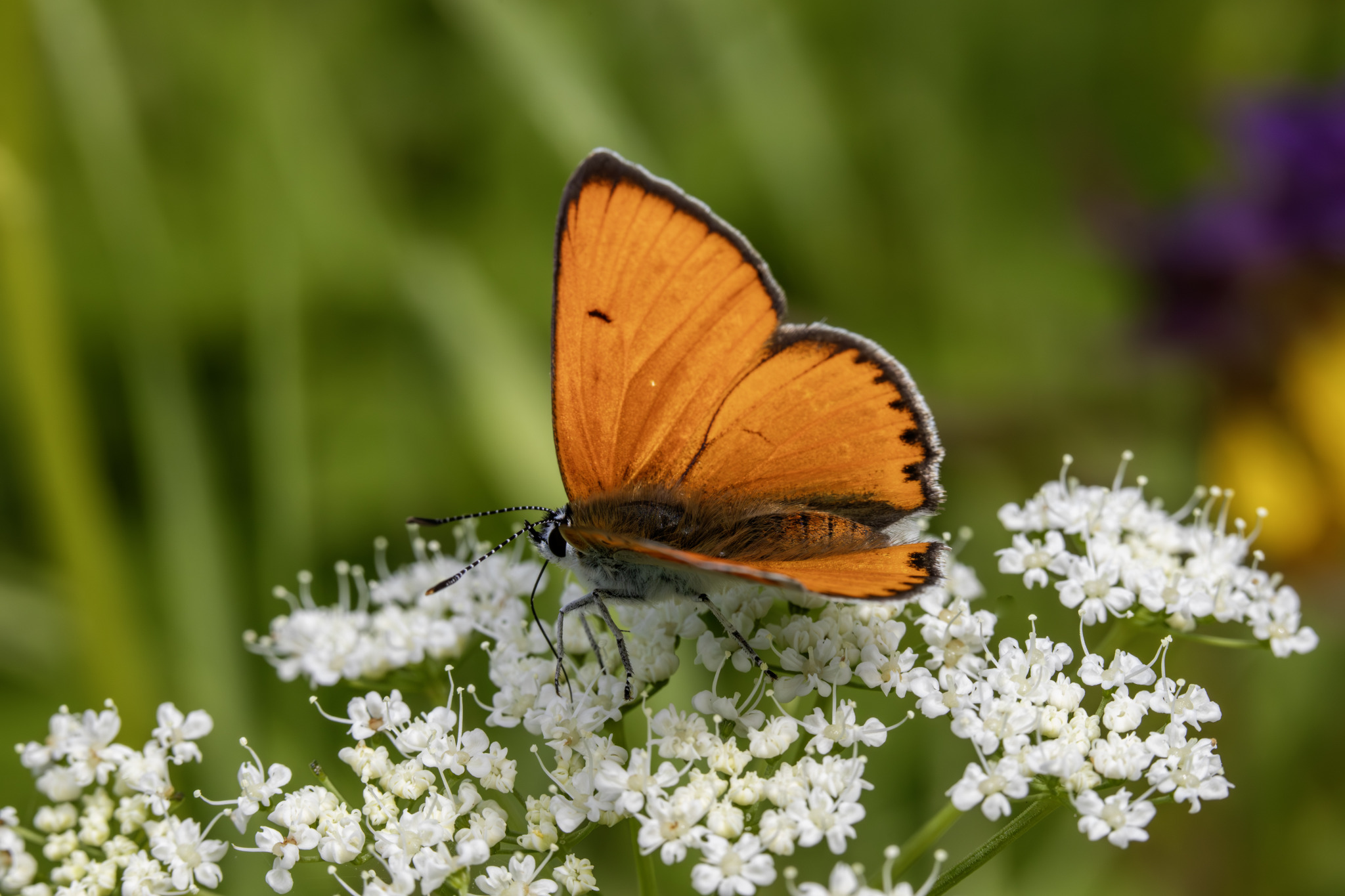The Large Copper (Lycaena dispar) is a strikingly beautiful butterfly in the family Lycaenidae. Known for its vivid copper-orange wings, this species is a symbol of successful conservation efforts in some regions. It is closely associated with wetlands and relies on specific plants, particularly water dock, for its survival.
Physical Description
- Size:
- Wingspan: 37–45 mm, making it one of the larger copper butterflies.
- Coloration:
- Males: Bright copper-orange with a darker border and subtle black spots on the forewings.
- Females: Slightly duller, with more prominent black markings.
- Undersides: Pale gray with orange and black markings for camouflage.
- Shape:
- Compact and delicate, typical of Lycaenids.
Behavior
- Flight:
- Swift and purposeful, often seen flying low among wetland vegetation.
- Activity Period:
- Flies in June and July in most regions, with a single brood per year.
- Feeding:
- Adults feed on nectar from flowers like clover, thistles, and marsh plants.
Habitat
- Found primarily in wetland environments, including:
- Fens, marshes, and wet meadows.
- Riverbanks and ditches with water dock (Rumex hydrolapathum).
- Requires habitats with host plants and nectar sources.
Life Cycle
- Eggs:
- Laid singly on the leaves of water dock and other dock species.
- Larvae:
- Green with faint stripes, feeding on dock leaves.
- Undergo multiple molts before pupating.
- Pupae:
- Well-camouflaged, attached to low vegetation.
- Adults:
- Short-lived but highly active, focusing on mating and feeding.
Distribution
- Native to Europe and parts of Asia.
- Declined in western Europe due to habitat loss, but populations remain stable in parts of eastern Europe and Asia.
- Reintroduction efforts have been successful in some regions, such as the UK.
Conservation Status
- Vulnerable in many regions due to habitat destruction and drainage of wetlands.
- Conservation programs focus on wetland restoration and protection of water dock habitats.
Ecological Role
- Pollination:
- Contributes to the pollination of wetland flowers.
- Food Web Contribution:
- Preyed upon by birds, spiders, and other predators, especially in the larval stage.
Interesting Facts
- Conservation Success:
- The Large Copper is a flagship species for wetland conservation in Europe.
- Wetland Specialist:
- Its dependence on water dock ties its survival to wetland health, making it a sensitive ecological indicator.
- Subspecies Variation:
- Several subspecies exist, with variations in size and coloration depending on geographic range.
Summary
The Large Copper (Lycaena dispar) is a dazzling butterfly whose presence highlights the importance of preserving wetland ecosystems. Its vibrant orange wings and unique ecological role make it a cherished sight for butterfly enthusiasts and a symbol of conservation success in regions where it has been reintroduced. Protecting its habitats is essential for ensuring the survival of this remarkable species.
Views: 1582
Subscribe to the newsletter:
